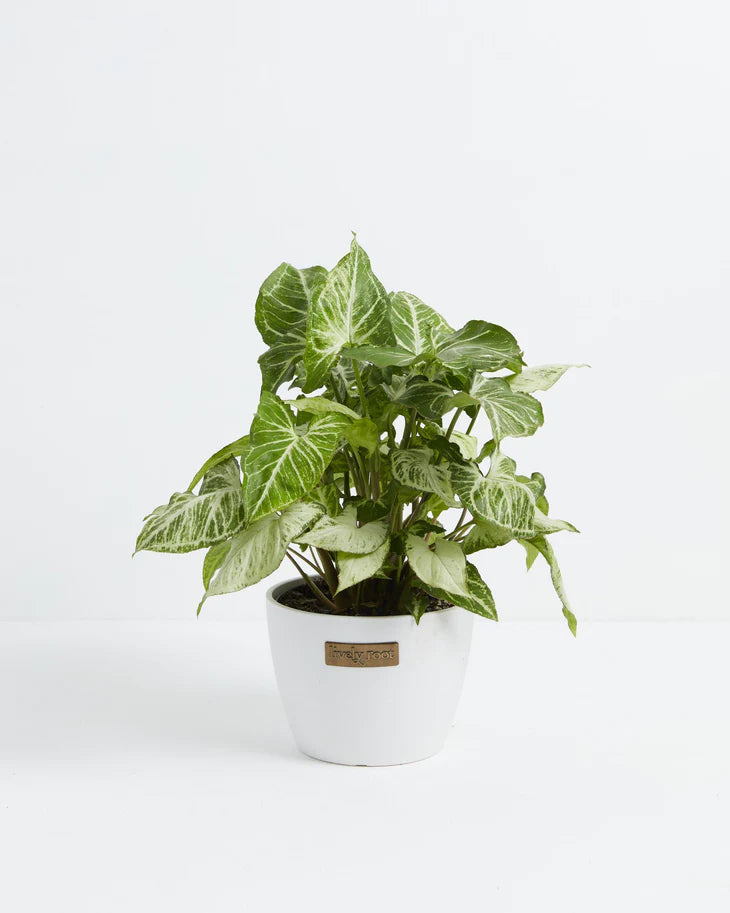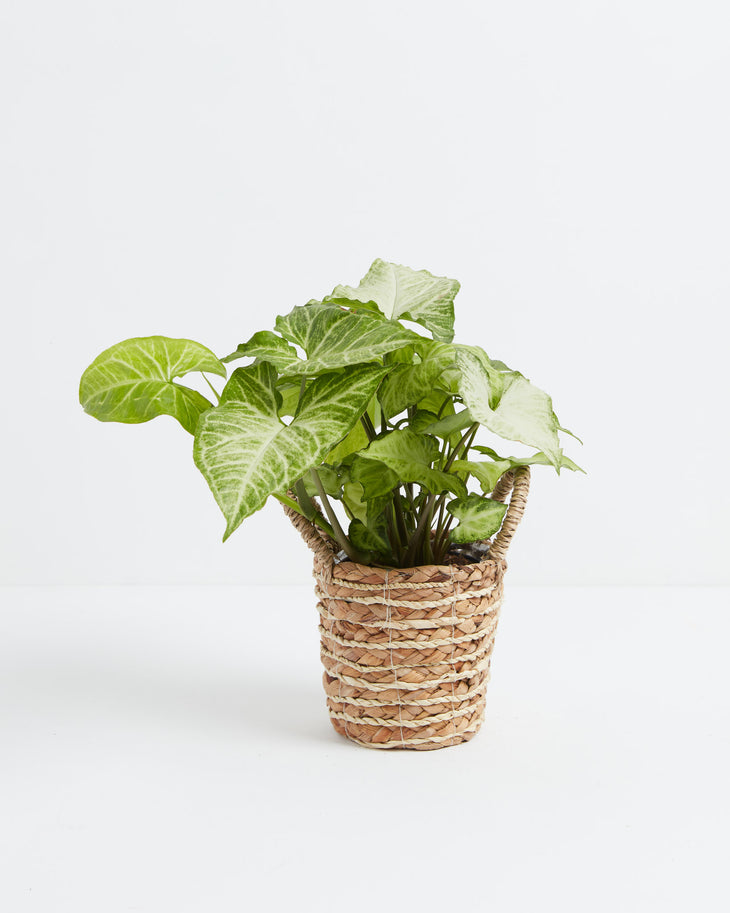How to Grow and Care for your Syngonium White Butterfly

The Syngonium White Butterfly plant is botanically called the Syngonium podophyllum. It is regularly known as the arrowhead vine, American evergreen, nephthytis, and five fingers. It also is referred to as the White Butterfly Arrowhead plant among others. These 80 percent white-colored plants are distinctively shaped like an arrow, hence the name arrowhead. The plant is commonly known for its low maintenance and versatility. Its beautiful foliage changes in shape as the individual leaves transition from juvenile to maturity. The Syngonium White Butterfly is perennial and native to the semi-tropical climates of Brazil, Bolivia, Ecuador, and Mexico.
Water
The Syngonium White Butterfly grows better in evenly moist soils. Watering should be done in a way that allows the soil to dry. Most growers tend to use ‘little and often’ watering approach; this approach does not apply to the Syngonium White Butterfly plant. Growers should determine the appropriate water needs of their plants and keep adjusting them with seasons. For example, during winter, the waiting period between watering increases to compensate for the slow drying process.
Light and Humidity Requirements for the Syngonium White Butterfly Plant
Humidity is vital to Syngonium White Butterfly; dry air causes brown leaf crisping. It is fundamental to ensure humidity levels remain over 60 percent. Simple methods, such as grouping plants, misting, pebble trays, and humidifiers, can be employed to increase humidity. Place your plant in a location where it can get plenty of indirect sunlight. Elongated exposure to direct sunlight scalds the leaves. The plant thrives in temperatures of 61°F-70°F. It is vital to ensure the room temperature does not fall below 55°F.
Soil and Fertilizer
In its natural habitat, the Syngonium White Butterfly grows under tree shades in well-drained soils rich in organic matter. To simulate similar soil conditions, create a potting mix using half ocean forest, quarter coco coir, and quarter charcoal and pumice soil. You can spice up the mixture by adding three or four handfuls of worm compost. All-purpose potting soil will also do the job.
Apply half-strength indoor plant liquid fertilizer at least once a month. Alternatively, use slow-release fertilizer or top-dress with worm castings or compost in early spring.
Cleaning and Pruning
Clean your plant using contemporary cleaning methods like dusting and wiping using a soft damp cloth. Pruning is essential for avoiding the ugly flop effect and keeping the plant organized. Avoid keeping these in areas where pets and children can easily access it since it is poisonous if consumed. To prune, use a sharp knife or pair of scissors to cut off unwanted leaves and overgrowing stems. Safeguard your eyes from the milky substance produced by the plant.
White Butterfly Arrowhead Plant Propagation
The Syngonium White Butterfly can be easily propagated by germinating its cuttings in soil or water medium. Identify a new growth shoot with one or two leaves and cut it a few inches below the first pair of nodes. Put the cutting in water and keep it topped. After a few weeks, when the rooting system has been established, transfer the plant to a pot. If you opt to plant the cutting directly into the soil medium, it is advisable to first deep the cuttings into a rooting hormone.
Repotting
The majority of the Syngonium White Butterfly’s growth happens around the stems and leaves compared to the roots. For that reason, small pots tend to go well with the plant. However, if you notice slowed growth or the frequency of watering increases, it is noble to repot the plant into a bigger pot. Repotting involves using a coffee filter to cover drainage holes in the new pot, adding a layer of potting mix in the new container, and uprooting the plant. Loosen its roots, plant it in the new pot, and water adequately. Allow the soil to drain and take the plant to its designated area.
Conclusion
The Syngonium White Butterfly is an attractive plant known for its air-purifying capabilities. It is easy to care for, but prone to spider mites and aphids. It can also become variegated when grown in low light conditions, and low humidity encourages brown crispy leaves. Furthermore, the plant can become lanky and floppy when pruning is disregarded for a long time. Syngonium White Butterfly is poisonous to pets and humans, always keep it out of reach from children and pets.
Frequently Asked Questions
How do you take care of a Syngonium White Butterfly plant?
General care for the Syngonium White Butterfly plant consists of medium to bright sunlight, moderate watering, and average humidity. It is a tropical plant so they tend to like it warm!
Is the Syngonium White Butterfly plant toxic?
The White Butterfly plant is mildly toxic for humans, cats, and dogs due to a high calcium oxalate content. If ingested this may cause difficulty swallowing, drooling, gastric distress, kidney stones, swelling, or vomiting.
The sap from this plant can also cause skin irritation so it is generally advised to wear gloves when handling.
How often do you water a White Butterfly plant?
The Syngonium White Butterfly plant does best with evenly moist soil. So rather than a ‘little and often’ watering approach, you should let the plant and soil dry out a little between waterings.
How big do Syngonium White Butterfly plants get?
When this plant is allowed to grow at its fullest, it can grow as tall as 3′ to 6’ feet with a spread of 1′ to 2’ feet! How big it gets ultimately depends on the pot that you plant it in.















